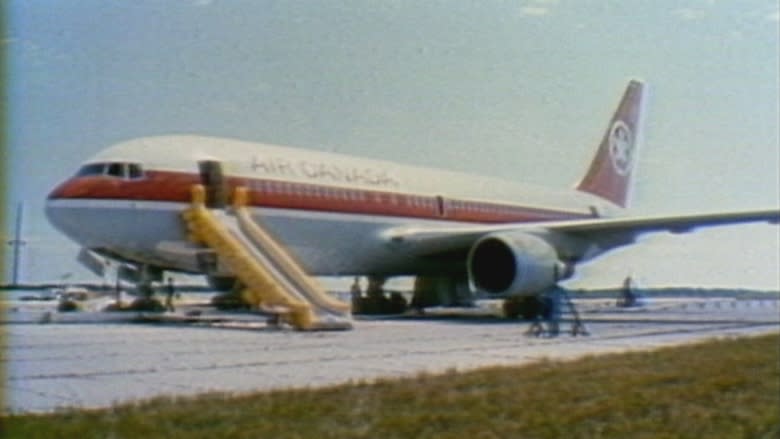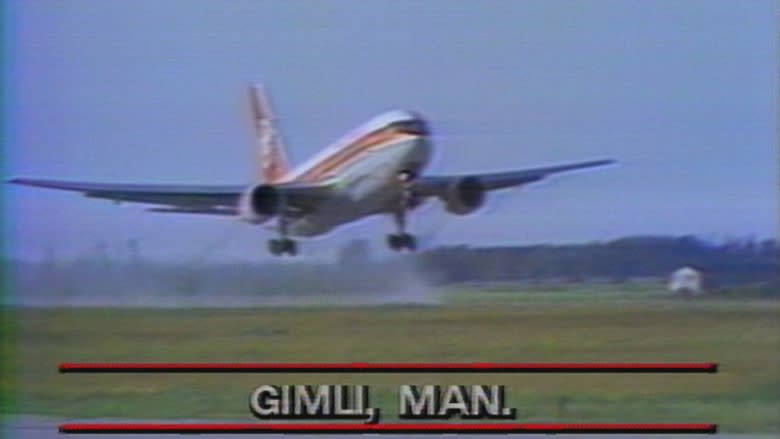When a metric mix-up led to the 'Gimli Glider' emergency
It's a white-knuckle air passenger's greatest fear: being aboard an aircraft whose engines suddenly lose power.
On July 23, 1983, those fears became all too real for the 61 Edmonton-bound passengers of Air Canada Flight 143. Remarkably, the plane made a safe emergency landing at an airstrip near Gimli, Man., about 90 kilometres north of Winnipeg.
In the immediate aftermath, experts believed a faulty fuel gauge might be to blame. But in the days that followed, the real reason emerged.
Metric mix-up
The Boeing 767 was the first metric plane to fly in Canada.
The Fuel Quantity Information System computer on Flight 143 was malfunctioning, so ground crew in Montreal loaded the fuel manually using calculations involving the specific gravity of jet fuel.
But the factor they used was 1.77 pounds/litre, not the all-metric 0.8 kg/litre required for the new 767. The plane had half the fuel it needed to reach Edmonton.
The plane began to run out of gas near Red Lake, Ont., 225 kilometres from Gimli.
The pilot, Capt. Robert Pearson, was an experienced glider pilot (he co-owned a Blanik L-13 sailplane). First Officer Maurice Quintal had once been stationed at the Royal Canadian Air Force base at Gimli and was familiar with the landing strips.
Go-cart racers scrambled
July 23, 1983, was "Family Day" for the Winnipeg Sports Car Club. The Gimli base was full of families and campers, and the runway was being used for go-cart races. Spectators and racers had to scatter as the giant plane touched down.
Without hydraulic pressure, the nose landing gear of the plane could not be fully lowered, and the nose of the 767 slammed into the ground, shooting out sparks as it dragged along the tarmac. After the landing, a fire in the nose of the plane was put out by go-cart racers with hand-held fire extinguishers.
The only injuries were to passengers who exited by the plane's rear emergency slide. Because the nose landing gear was not extended, the tail of the plane ended up three storeys in the air.
The aircraft was fixed at Gimli and flown to Winnipeg for full repairs. It was later put back into regular service and finally retired in 2008.
But on Oct. 4, 1983, Air Canada disciplined the pilot and co-pilot for allowing the near-tragedy to happen.
The pilot was demoted for six months, the co-pilot was suspended for two weeks and three ground workers were also suspended. A 1985 Transport Canada report blamed errors and insufficient training and safety procedures.



